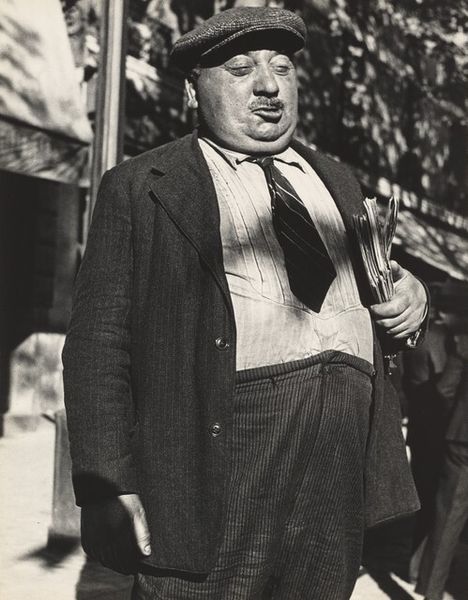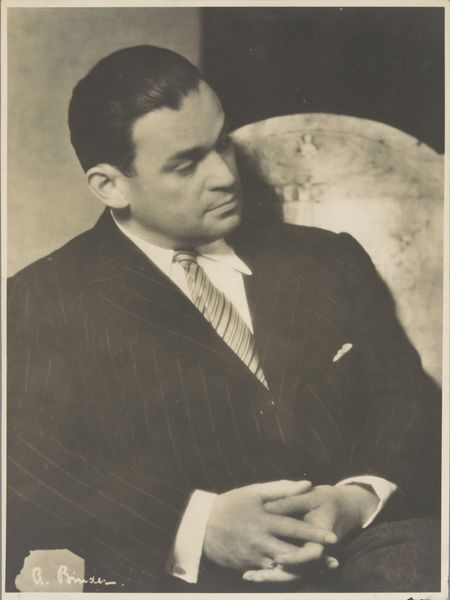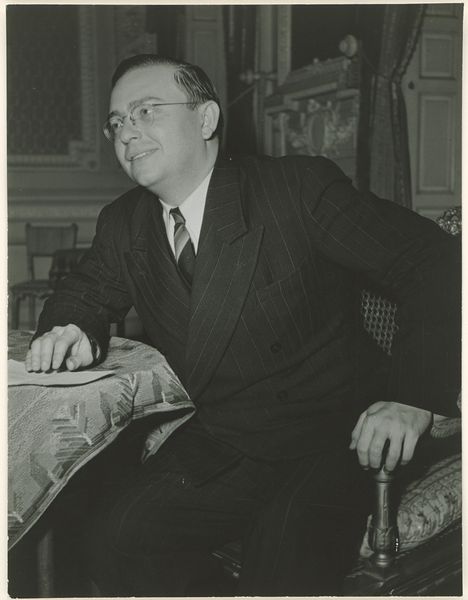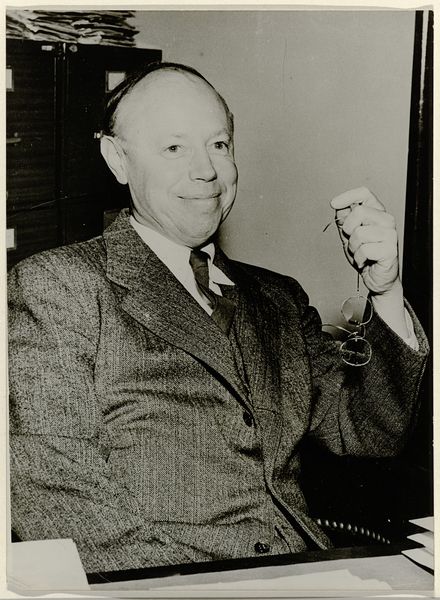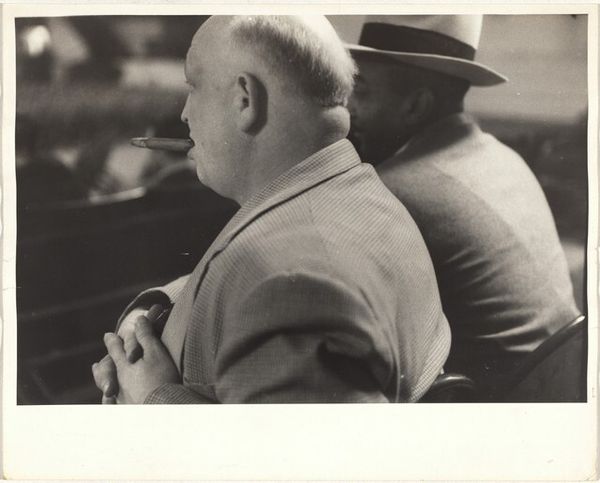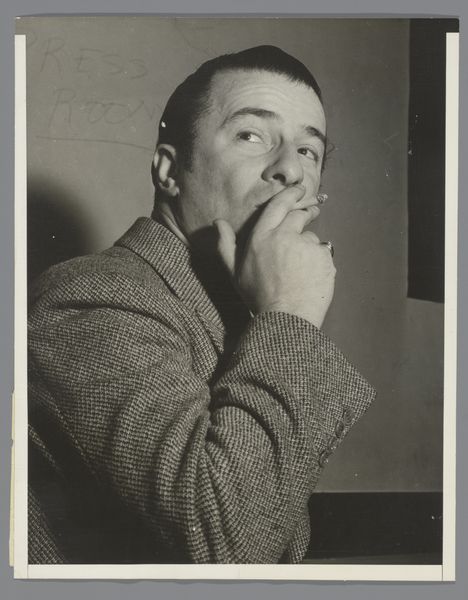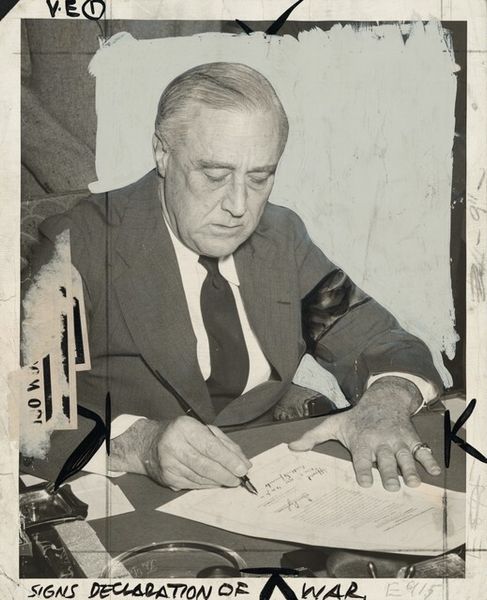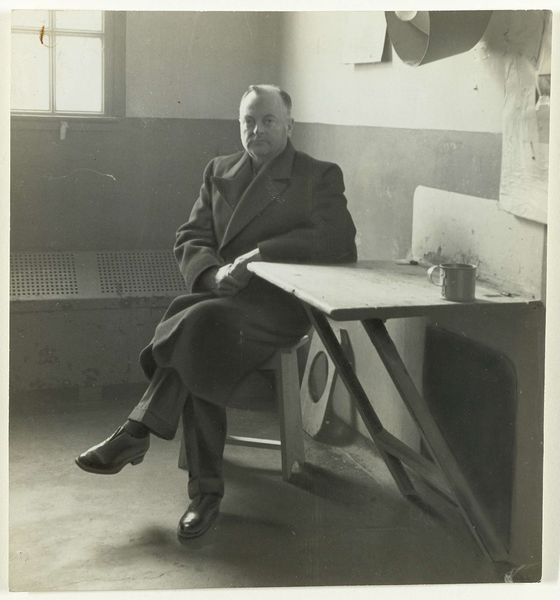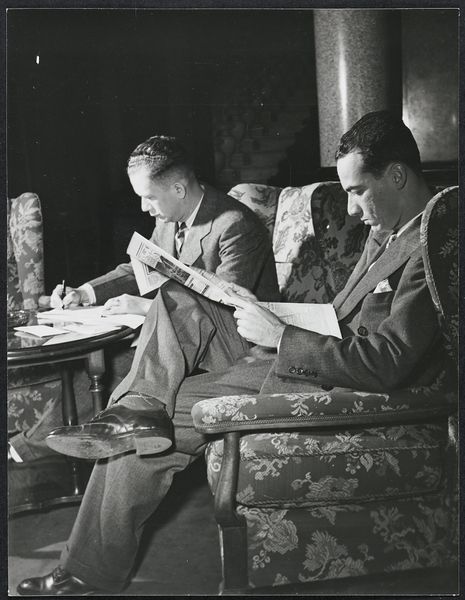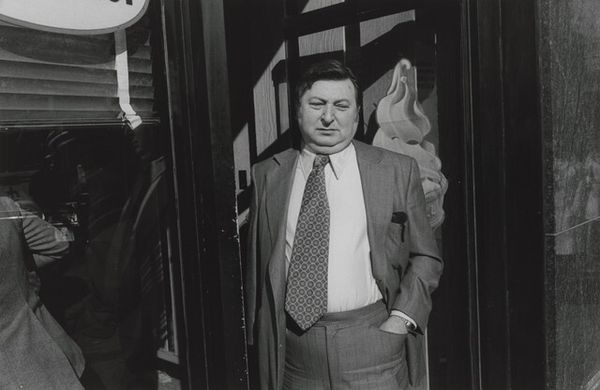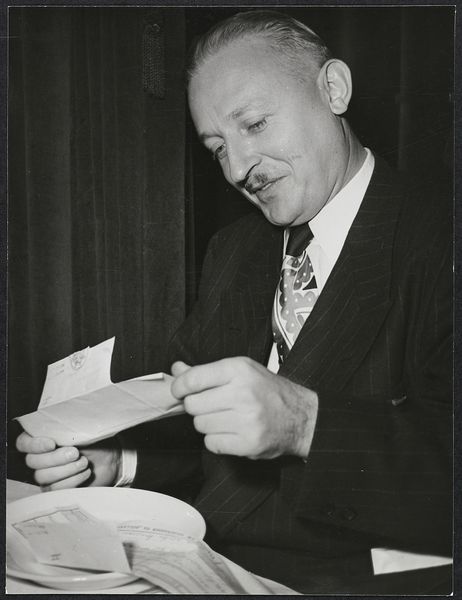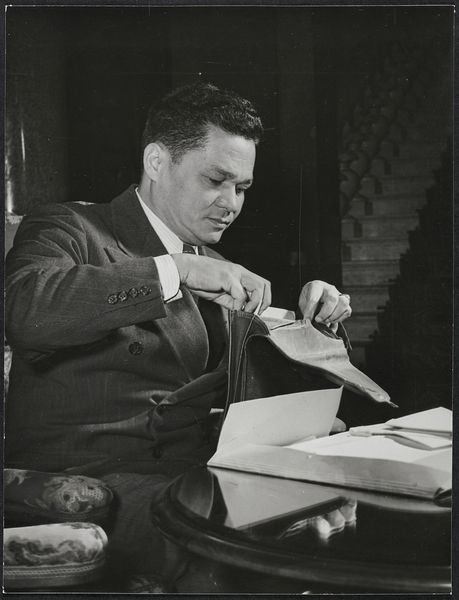
photography, gelatin-silver-print
#
portrait
#
black and white photography
#
photography
#
black and white
#
gelatin-silver-print
#
monochrome photography
#
genre-painting
#
realism
Dimensions: height 20 cm, width 15 cm
Copyright: Rijks Museum: Open Domain
Editor: This photograph, "Een van de deelnemers aan de RTC: C.A. Eman," a gelatin silver print from 1948, presents a rather formal, slightly stuffy, portrait. He's looking up and to the side, perhaps contemplating something just beyond our view. I'm curious, what sort of statement do you think a photograph like this was trying to make at the time? Curator: It's essential to consider the social context. Post-war photography often served to solidify and document social structures. A portrait like this, presented within a museum context today, shifts. It encourages us to look at representation itself and the relationship between individual identity and public persona. Does it feel propagandistic to you? Editor: Not exactly, it's more… neutral? Perhaps that’s its own kind of statement. A kind of insistence on normalcy, maybe? Curator: Precisely. The neutral tone, the almost mundane formality, can be read as a visual attempt to reinforce stability and order following a period of immense upheaval. Note also the institutional setting implied in the title -- someone "of the RTC". The subject isn't merely an individual, but a participant within a formal institution. How does that influence your understanding? Editor: It frames him. The photo is doing something *for* the institution. Creating an image of legitimacy. But is the choice of a photograph specifically a deliberate choice, versus a painting? Curator: Absolutely. Photography in this period possessed a perceived objectivity. A painting involves artistic interpretation; photography implies direct capture. That perceived truth value lent credibility to the subject and, by extension, the institution. But, as we know, photographs are never truly objective; framing, lighting, and pose all contribute to constructing an image. Editor: So it's about using the *idea* of objectivity for a purpose. I see that clearly now. I appreciate you highlighting the broader context at the time, really changes how one perceives the piece. Curator: Precisely! Considering these factors adds so much depth to our understanding and the continued use of these types of images and why they persist.
Comments
No comments
Be the first to comment and join the conversation on the ultimate creative platform.
